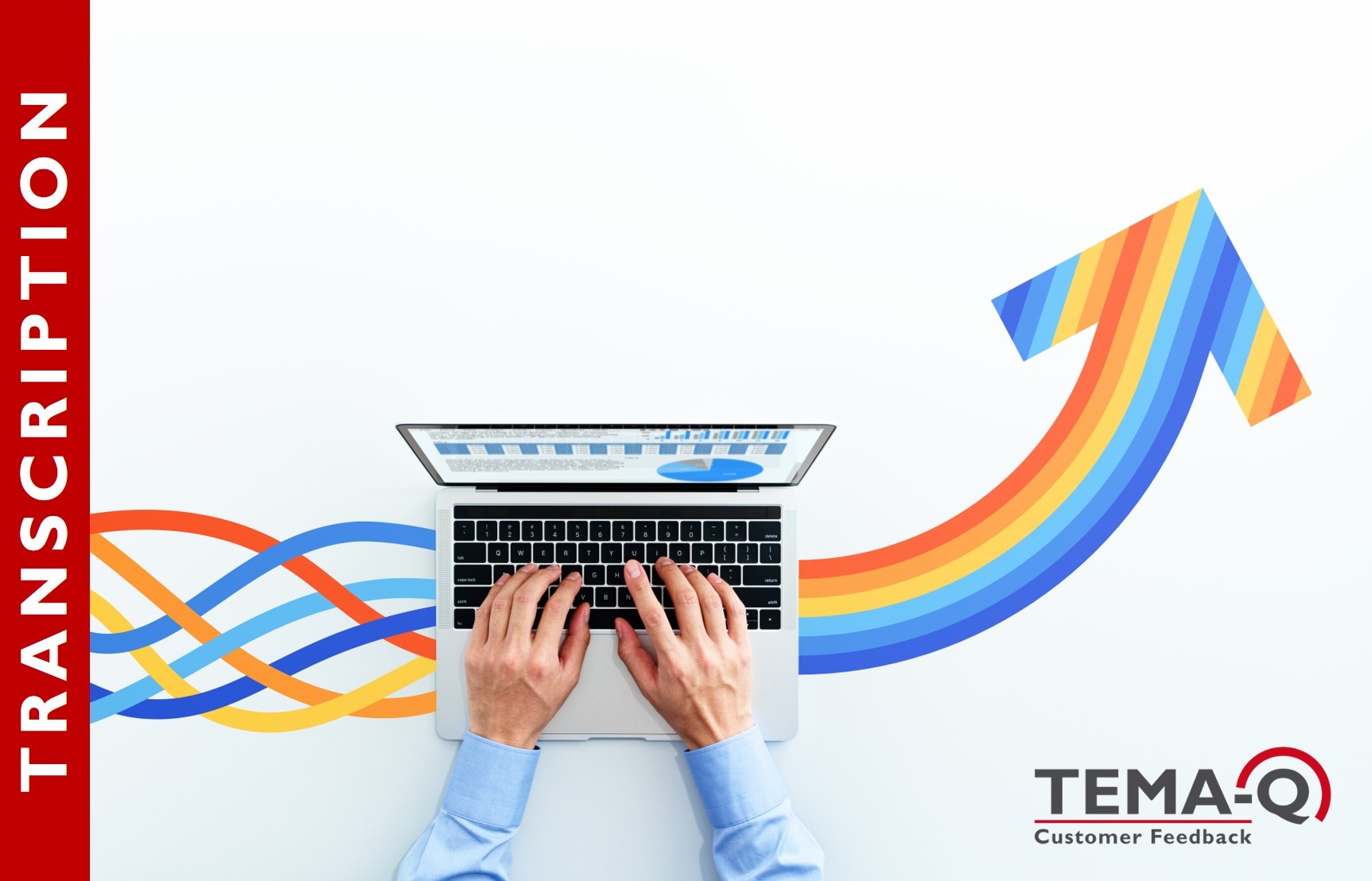After a customer experience (CX) study, a lot of data is collected – often in the form of audio recordings and ratings given. While ratings can be easily evaluated – averages, standard deviations or trends can be calculated and displayed immediately – audio recordings of open-ended questions require thorough preparation. The first step: transcription.
Transcription is the process of converting spoken language into written language. In CX research, it provides deep insights into the needs and expectations of customers and is therefore an essential step in analyzing the Voice of Customer (VoC).
There are two types of transcription:
- Automatic transcription using AI-based speech recognition models – which are already very powerful today.
- Manual transcription with quality control.
At TEMA-Q, we use both: AI support combined with the experience of our long-standing employees to maximize precision.
Furthermore, a distinction can be made between verbatim and smoothed transcription. Verbatim transcription captures every word exactly – including pauses or filler words – whereas smoothed transcription focuses on the clarity of the content. Which method is most useful depends on the analysis goal. If you want to gain relevant insights, you should determine in advance which level of detail is necessary to avoid losing important information.
For us at TEMA-Q, excellent data quality with the least possible loss of information is our top priority. Our goal: to capture the Voice of the Customer so precisely that clear conclusions can be drawn from the key figures to the original statements even after the final evaluation. At the same time, we ensure compliance with all data protection guidelines by anonymizing all references. This way, we provide our customers with an optimal data basis for making informed decisions to improve the customer experience.
Take a look at our LinkedIn profile at https://www.linkedin.com/company/tema-q/ to gain exciting insights into the world of customer and employee experience in the future.
If you have any questions about these or other topics, or would like a live demo version of ClaralytiX via video conference, click here to make an appointment or contact us.
Coppenhaver, From Voices to Results – Voice of Customer Questions, Tools and Analysis, 2018
Fuß & Karbach, Grundlagen der Transkription, 2019

